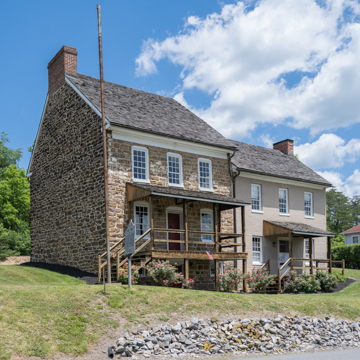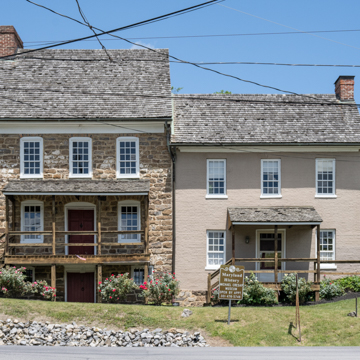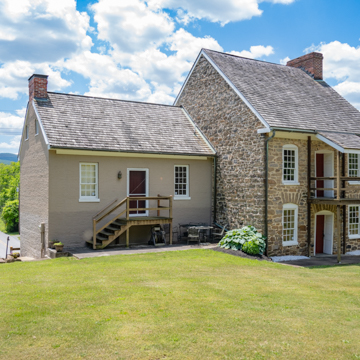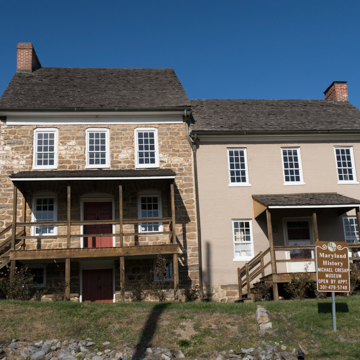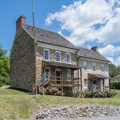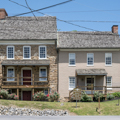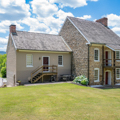This house is significant for its early regional architecture and its association with noted frontiersman Michael Cresap. Oldtown was created in 1741 as a pioneering village and trading post by Cresap’s father, Thomas, to help establish Maryland’s claim to the region, operating under directions from Lord Baltimore’s agent, Daniel Dulany. Located near an abandoned Shawnee village along the Nemacolin Trail (now a protected archaeological site), it was then the only settlement in Maryland west of the Potomac River. Michael Cresap was a noteworthy pioneer in his own right, clearing land and building roads to encourage settlement. He was captain of the first Maryland troops to join General Washington in a campaign against the French to maintain hold of the region. George Washington recorded his visit to this house in his diary.
In the German tradition, the house is built of indigenous stone and banked into the hillside over a spring to provide water and cold food storage. It contains two rooms per floor with a winding staircase rising from basement to attic. A nonconnecting brick section was later appended. The house was saved from demolition by the Reverend Irvin Allen, who purchased it in 1961, restoring it as a museum. It sits just north of the Chesapeake and Ohio Canal, Canal Lock 70, and a lockkeeper’s house (c. 1849 canal, c. 1900 house).









